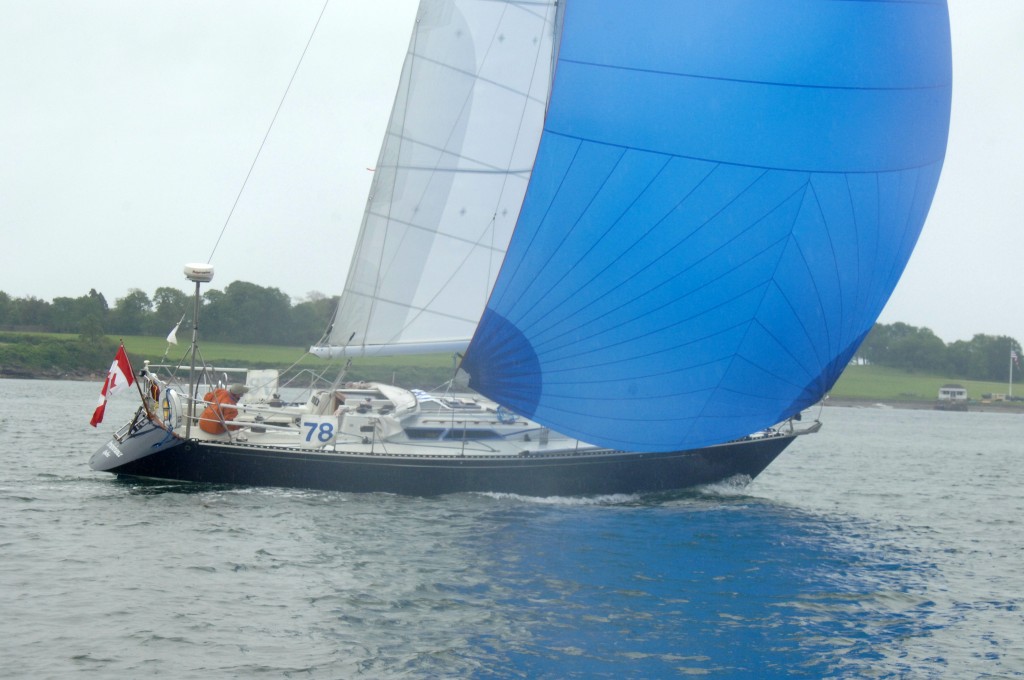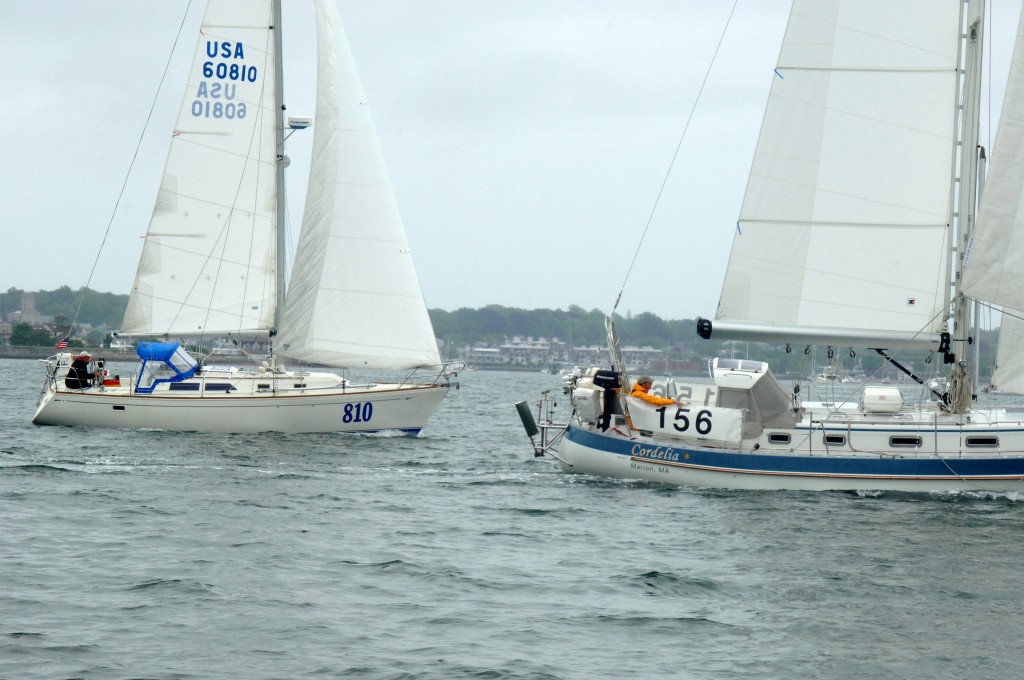The second event in November is the start of the Vendee Globe. Without question the Vendee Globe is, hands down, the hardest sporting contest on the planet. It might even rank in the top ten of the hardest things to complete on the planet. “Climbing” Mount Everest is a relative cake walk when viewed alongside the Vendee Globe.
For such a hard thing to do, the rules are simple, rather like the old gag about the simplicity of the rules for the Sydney Harbor 18 footers:
“They’re 18 feet long and they start at two o’clock”.
For the Vendee Globe the gag might run:
“The boats are 60 feet long and the start is in November”.
Realistically there are four rules.
• The Boats: IMOCA 60 footers.
• Crew: Single handed
• Course: Around the world, France to France, under the Great Capes, Antarctica to starboard
• Rules: Non-stop, no assistance.
Simply reading this summary of the race does not do justice to the magnitude of the event.
Consider for a moment the following:
The record for this circumnavigation is 84 days set in the last race in 2008-2009. And that was of course for the winner. The last finisher crossed the line FORTY TWO DAYS after the winner taking 126 days. Another month and a half at sea! This is an average of just over 8 knots or about the time it used to take the fast BOC boats to sail from Newport to Cape Town.
Think about that for a minute.
What are you going to be doing for the next four months beginning 10 November 2012?
• Will you be doing it by yourself?
• Will you get, oh, 4-5 hours of sleep per 24, on a good day!
• Will you be burning through 6,000 to 8,000 calories per day?
• Will you be burning these calories on a diet largely fueled by freeze dried food?
• Will you be trying to fix equipment that ranges across the industrial spectrum from chemistry, electricity, hydraulics, electronics, mechanics, composite fabrication, sail repair?
• Will you have the skills, thinking, the determination to finish have to deal with all alone
• Will you have to repair yourself in the event of injury?
• Will you have the courage and skills to beat the record for a 24 hours run of 439 miles set in 2004? An AVERAGE of bit over 18 knots.
• The 24 hour run record in the last Volvo Ocean Race is 565 miles in 24 hours, on a 70 foot boat with 10 guys…..
I could go on but you get the idea.
The Vendee Globe is much more than a sail boat race. Even after following the race for years, I still find it hard to precisely define what it is. Ultimately it is probably only possible to define it if you have done it. Only two American sailors, Bruce Schwab and Rich Wilson have successfully finished this race. A third, the late Mike Plant, completed the course but was not scored as a finisher because he accepted assistance south of New Zealand.
The blistering pace that defined the 2008 race bears comparison to another bench mark circumnavigation, the Trophy Jules Verne.
In 1992 my wife and I were in France looking at Mini Transat boats. Driving along the Brittany coast one afternoon, we had the car radio on and I heard the words “Commodore Explorer”. My wife had enough French to tell me that it was a interview, live at sea (well it is France after all) with Bruno Peyron skipper of this 90 foot cat of the same name. The gist of it was they were hours away from completing a circumnavigation of the globe in less than 80 days the basic premise behind the Trophy Jules Verne-Around The World in 80 Days
• 16 years ago
• 10 or so guys
• 90 foot multihull
• 79 days.
By any standard the Vendee Globe is one of the most compelling events ever organized. The depths to which the human spirit needs to be plumed are mind boggling. A fantastic insight into this condition is a first person story of the race by one of the two US Vendee Globe sailors, Rich Wilson, is in his book- “France to France, Antarctica to Starboard”. Wilson, well known for his combining educational programs and sailing activities for school kids finished the 2008 race.
While not the fastest boat around the Big Blue Marble, Rich was:
The lone America, the oldest skipper, sailing one of the oldest boats, with one of the smallest budgets and he suffers from Asthma to boot.
The only thing I can think of that surpasses the Vendee Globe as a test of ones ability to overcome relates to Commander Bill King. Commander King was one of the original sailors to attempt the Grandfather of the Vendee Globe, the Golden Globe race in the late 1960’s. Commander King, a Royal Navy Submarine commander in the Second World War lets us see just a glimpse of the stresses he had to bear in that role, in this brief video on Vimeo.
Thanks to Scott Kuhner for the link.
If you are moved by that which moves the human spirit, watch the Vendee Globe this winter. Millions of Frenchmen and women do.





